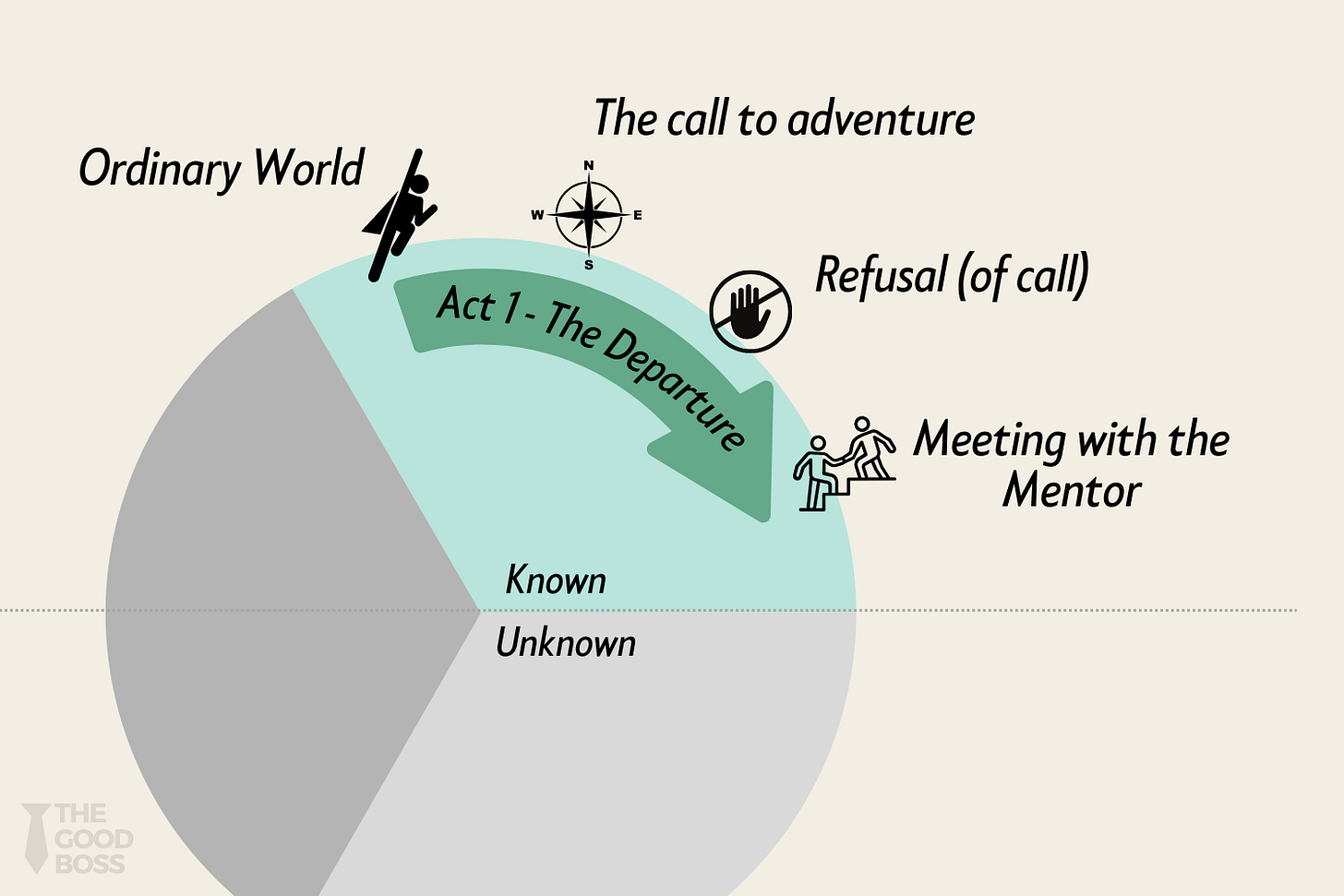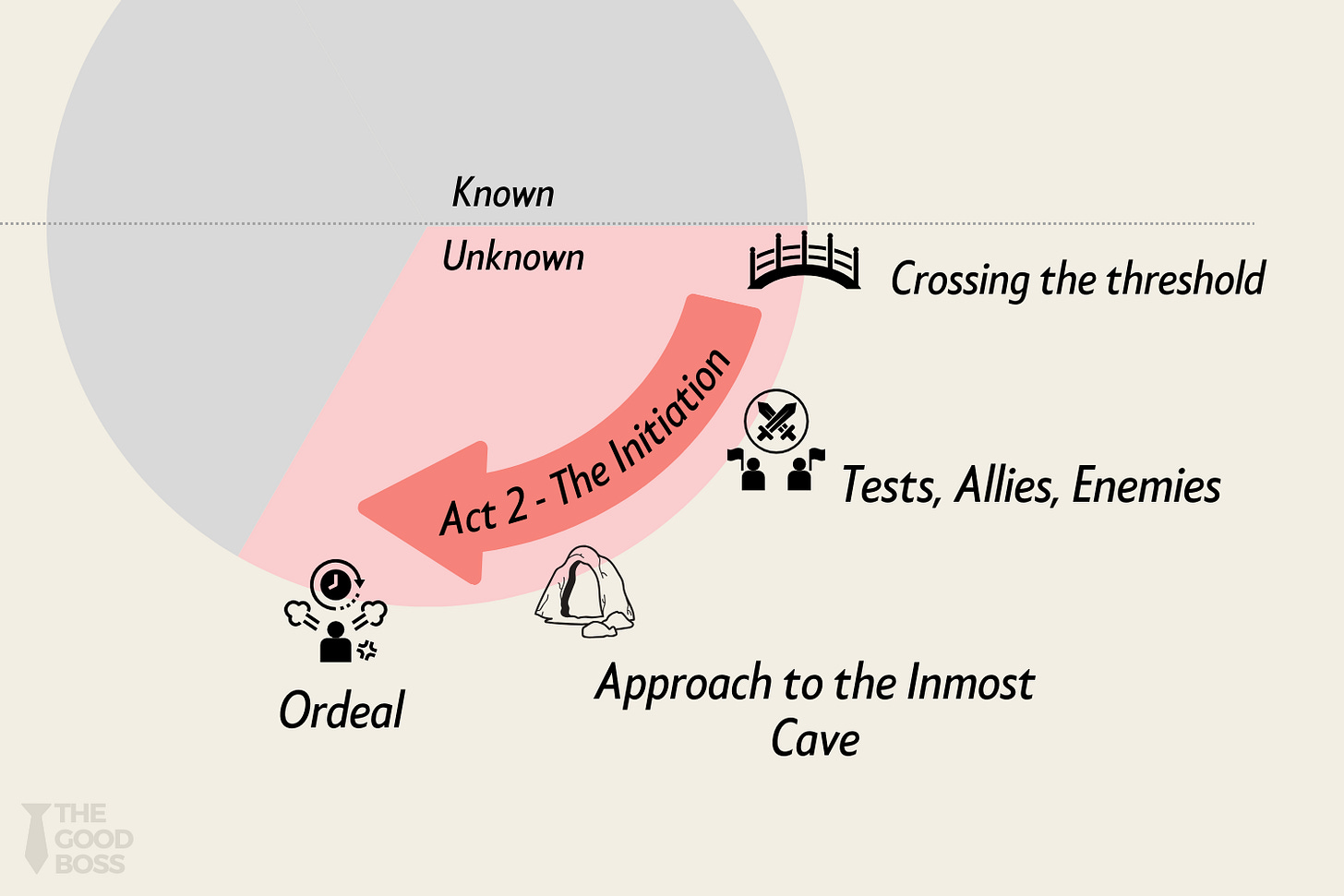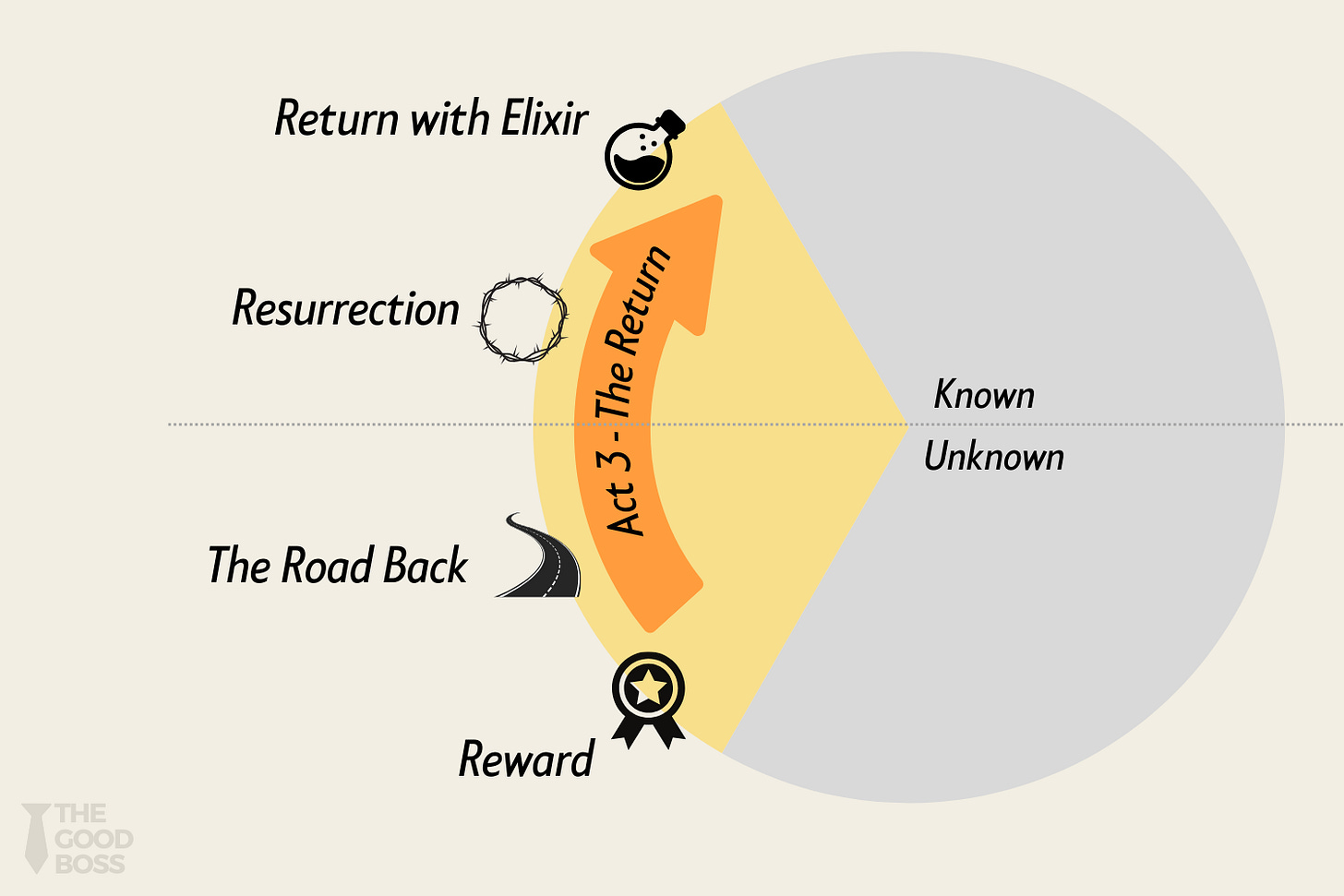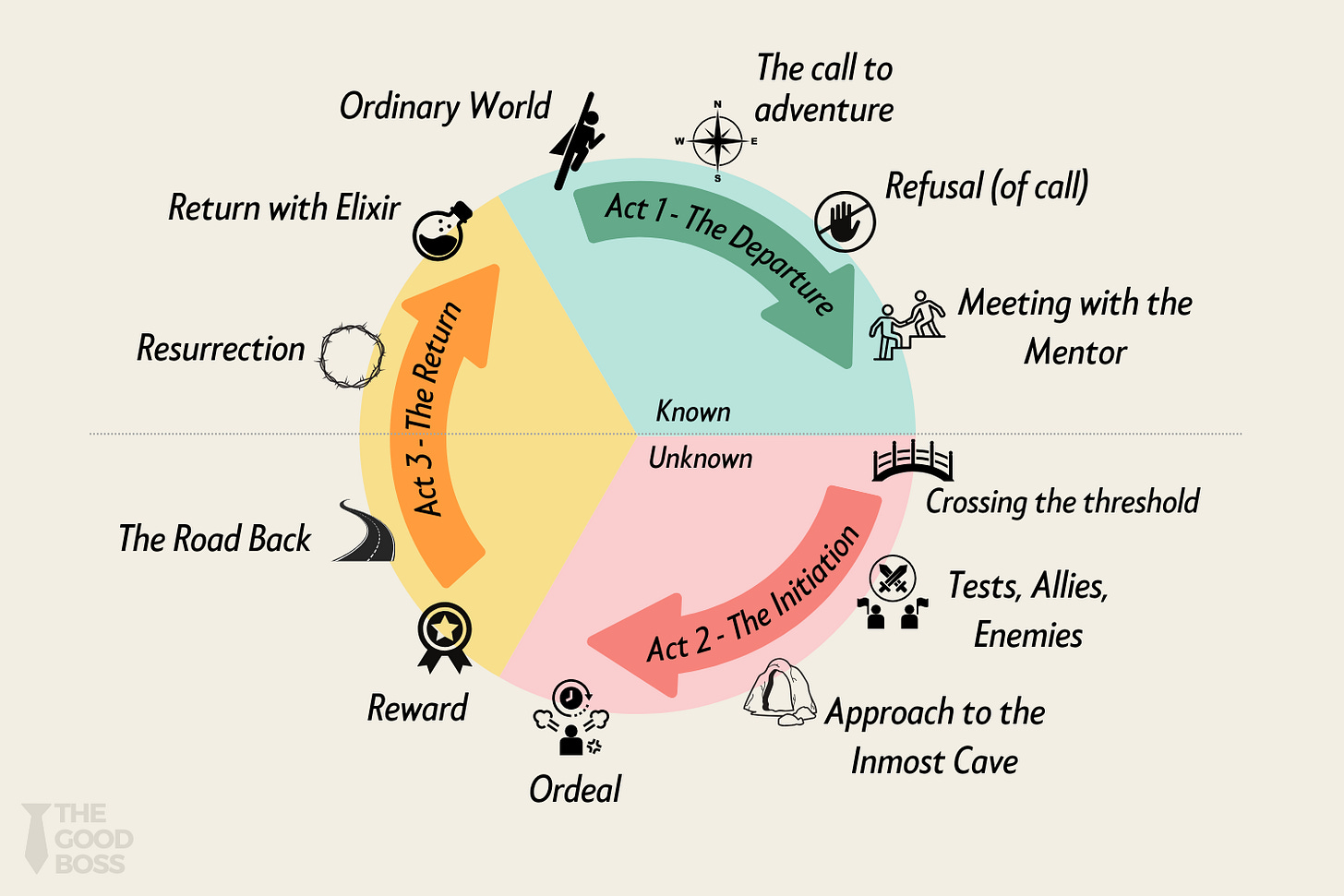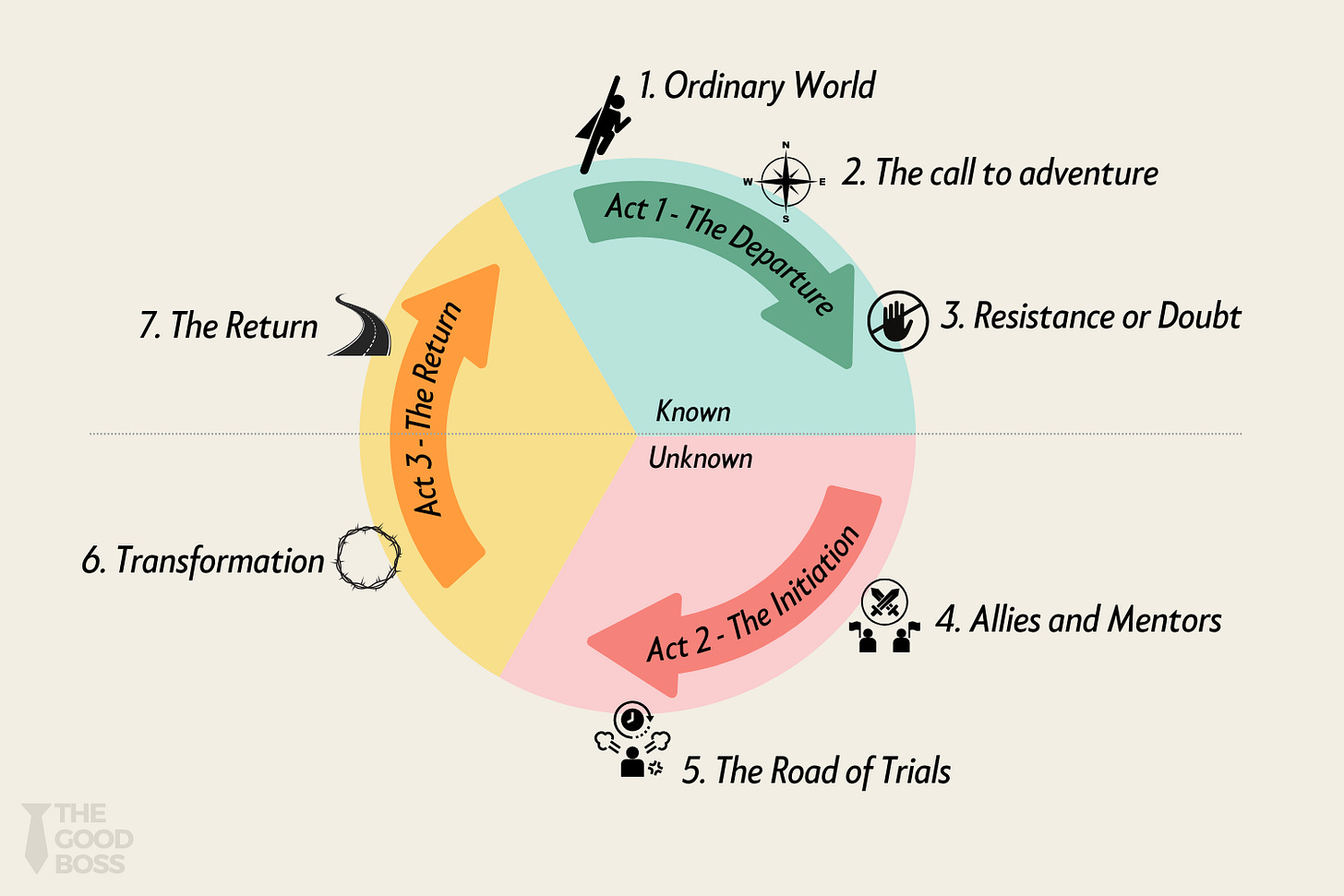The Hero’s Journey: How to Tell Stories That Inspire Action
Turn your team updates, strategy decks, and one-on-ones into unforgettable narratives
In this issue:
Part 1: Understanding the Hero’s Journey
What is the Hero’s Journey?
The Three Acts of the Hero’s Journey
Part 2: Applying the Hero’s Journey in Leadership
The 7 Stages of Storytelling
Real-Life Leadership Scenarios
The Hero’s Journey Worksheet
Part 3: Going from here
Common Pitfalls and How to Avoid Them
Recommended Resources
Final Takeaway
✨
A few years ago, I was trying to convince my stakeholders to pivot away from a project we’d spent months building. The pivot made sense. The data backed it. The logic was clear.
But nobody bought in.
I threw every chart I could at them. Nothing worked.
Then I tried something different. I told a story. It was about another team, in another company, who faced a similar challenge. I walked them through what that team went through: the fear, the challenge, and the big win at the end.
That worked.
That’s when I started digging deeper into storytelling frameworks. I discovered the Hero’s Journey, a pattern found in almost every great movie, novel, myth, or speech you’ve ever heard.
In this article, we will explore the Hero’s Journey in the context of leadership storytelling. We will learn how to utilize it to craft stories that inspire action. We will learn how to turn team updates, strategy decks, and one-on-ones into unforgettable narratives.
Ready? Let’s dive in.
Part 1: Understanding the Hero’s Journey
What is the Hero’s Journey?
The Hero’s Journey was first described by Joseph Campbell in The Hero with a Thousand Faces. It outlines a universal story arc that humans instinctively respond to, because, well, we’re humans.
You know this pattern even if you’ve never heard of it. Let’s see a few popular examples:
Star Wars: Luke Skywalker leaves home → trains with Yoda → fights Darth Vader.
The Lord of the Rings: Frodo inherits a ring → faces darkness → returns to the Shire changed.
Harry Potter: Harry Potter finds out he’s a wizard → battles evil → returns wiser.
But it’s not just for fictional or mythological epics. The framework applies in any situation where you’re delivering a message that needs the audience’s attention, including in leadership.
The Hero’s Journey follows a simple emotional arc: Struggle → Growth → Return.
At its core, it’s about change.
A person starts in their ordinary world.
Something disrupts that world.
They resist.
They’re forced to adapt.
They face tests.
They grow.
They return changed, and they help others with what they’ve learned.
That’s why this story pattern works so well in leadership. Because work is full of change.
Your team doesn’t want a project update. They want to know:
Why are we doing this?
What are we up against?
How will this help us grow?
The Three Acts of the Hero’s Journey
The Hero’s Journey can be divided into three acts, just like a classic play or film. Let’s review each of them:
Act I: The Departure (Setup)
The hero leaves the comfort of the familiar world.
The Ordinary World
We see the hero’s everyday life. Things are normal.
Example: A product team working on business-as-usual features.
The Call to Adventure
Something changes. A challenge or opportunity arises.
Example: A competitor releases a disruptive feature.
Refusal of the Call
The hero hesitates. Fear or doubt shows up.
Example: The team resists pivoting.
Meeting the Mentor
A guide appears. Someone shares wisdom, tools, or encouragement.
Example: A coach, leader, or customer insight that reframes things.
❤️ Enjoying the read? Subscribe to The Good Boss to get articles like this every week.
Act II: The Initiation (Struggle and Growth)
The hero enters the unknown, faces trials, and changes.
Crossing the First Threshold
The hero commits and steps into the new world.
Example: A team starts building the new strategy.
Tests, Allies, and Enemies
The hero faces challenges. Makes friends. Learns who to trust.
Example: The team encounters bugs, blockers, cross-team friction.
Approach to the Inmost Cave
The hero prepares for a big test. Stakes are high.
Example: Final round of user testing.
The Ordeal
The hero faces their biggest fear or challenge.
Example: A major launch fails. Or a crisis hits mid-project.
Act III: The Return (Resolution and Change)
The hero survives the ordeal, returns home, transformed and ready to share what they’ve learned.
Reward (Seizing the Sword)
After surviving the ordeal, the hero gains insight, tools, or a win.
Example: The team lands a breakthrough.
The Road Back
The hero heads home but still faces challenges.
Example: The team preps for rollout.
Resurrection
Final test. The hero proves they’ve changed.
Example: The team launches the new platform under pressure, and it works.
Return with the Elixir
The hero comes back with knowledge or change that helps others.
Example: The company adopts a new way of working.
The Full Journey
Now, if we piece together the three acts, here’s what the full Hero’s Journey looks like:
The journey goes through the three acts - the departure, the initiation, and finally, the return.
I know you might be thinking: how does this apply to leadership storytelling? That’s exactly what we will dive into next, in Part 2: Applying the Hero’s Journey in Leadership.
Enjoying the read? ❤️ Subscribe to The Good Boss to get leadership insights and frameworks like this every week. Consider becoming a paid subscriber to support my work, and get access to a host of premium leadership resources. Thank you! 🙏
Part 2: Applying the Hero’s Journey in Leadership
In this section, you will learn how to apply the Hero’s Journey in various leadership situations (such as strategic pitches, team updates, or performance conversations.)
We will start by reviewing The 7 Stages of Storytelling, a simplified version of the model for leaders that you can start applying right away.
We will then discuss some common real-life leadership scenarios, and how you would apply this framework in each of those.
Finally, we will make it real with the The Hero’s Journey Worksheet, which will help you build your muscle in applying and using this framework in your leadership role.
The 7 Stages of Storytelling
The Hero’s Journey can be simplified into 7 stages for the purpose of storytelling for leaders. Here’s what this simplified version looks like:
Now, let’s walk through each of those steps, and how you would apply them in a sample scenario.


